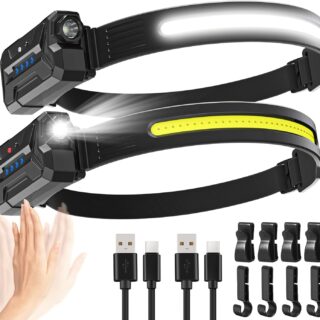As energy efficiency and environmental sustainability become increasingly important, solar lights have emerged as a popular and eco-friendly lighting solution for both indoor and outdoor spaces. Powered by the sun’s energy, these lights offer an easy and cost-effective way to illuminate your garden, walkway, or patio without relying on traditional electricity. This guide will help you navigate the key factors to consider when choosing the perfect solar lights for your needs.
1. Understanding How Solar Lights Work
Solar lights operate by converting sunlight into electricity through photovoltaic cells, typically located on the top of the light. During the day, these cells absorb sunlight and charge the built-in batteries. When the sun sets, the stored energy powers the light, providing illumination throughout the night. This process is automatic, requiring minimal maintenance and no external wiring, making solar lights a convenient and hassle-free option.
2. Types of Solar Lights: Finding the Right Fit
There are various types of solar lights designed for different purposes. Here are some of the most common ones:
- Solar Pathway Lights: These are small, stake-mounted lights designed to line walkways, driveways, or garden paths. They provide a gentle, ambient glow, enhancing safety and aesthetics.
- Solar Flood Lights: Offering a powerful, wide beam of light, solar flood lights are ideal for security purposes, illuminating large areas such as yards, driveways, or building exteriors.
- Solar Garden Lights: Decorative by nature, these lights are perfect for accentuating garden features, plants, or landscaping. They come in various designs, from lanterns to whimsical shapes, adding charm to your outdoor space.
- Solar Motion Sensor Lights: Equipped with motion detectors, these lights activate when they sense movement, making them ideal for security and energy conservation. They’re often used near entrances, garages, or other high-traffic areas.
- Solar Wall Lights: Mounted on walls, these lights provide focused illumination for outdoor spaces, such as patios or entryways, adding both functionality and style.
- Solar String Lights: Popular for decorative purposes, solar string lights are perfect for creating a festive atmosphere during events or holidays. They can be draped over trees, fences, or pergolas to add a magical touch to any outdoor setting.
3. Battery Life and Charging Time: Ensuring All-Night Illumination
The effectiveness of solar lights depends largely on their battery life and charging efficiency. Most solar lights are equipped with rechargeable batteries that offer 8-12 hours of illumination on a full charge. However, the actual performance can vary depending on the amount of sunlight the solar panel receives during the day.
If you live in an area with limited sunlight or during shorter winter days, consider solar lights with high-efficiency solar panels or those equipped with larger batteries. This ensures that your lights will stay illuminated throughout the night, even on days with less sunlight.
4. Brightness and Lumens: How Much Light Do You Need?
The brightness of solar lights is measured in lumens. The number of lumens you need depends on the application:
- Pathway Lights: 5-20 lumens per light are sufficient for marking paths and walkways.
- Garden Lights: 10-30 lumens provide ambient lighting that highlights garden features without being too harsh.
- Security Lights: 200-1000 lumens or more are needed for effective security lighting, ensuring bright illumination of large areas.
- String Lights: 1-2 lumens per bulb create a soft, decorative glow, perfect for setting a cozy atmosphere.
Consider the area you want to illuminate and choose solar lights with the appropriate lumen output to meet your needs.
5. Weather Resistance: Built to Last
Since solar lights are primarily used outdoors, weather resistance is a crucial factor to consider. Look for solar lights with a high IP (Ingress Protection) rating, which indicates their ability to withstand dust, rain, and other environmental factors. An IP65 rating is ideal for most outdoor applications, ensuring the lights remain functional in various weather conditions.
Additionally, consider the build quality of the lights. Lights made from durable materials like stainless steel or high-quality plastics are more likely to withstand harsh weather and provide long-lasting performance.
6. Installation and Placement: Maximizing Sun Exposure
One of the biggest advantages of solar lights is their easy installation—no wiring or electrical work is required. However, proper placement is key to maximizing their efficiency. Ensure that the solar panels are positioned in an area that receives direct sunlight for most of the day. Avoid placing them under trees, eaves, or other structures that could block sunlight and reduce charging efficiency.
For optimal results, regularly clean the solar panels to remove dust, dirt, and debris that can accumulate over time and reduce their ability to absorb sunlight.
Conclusion: Embracing Solar Power for a Brighter Future
Solar lights are an excellent way to embrace renewable energy while enhancing the beauty and functionality of your outdoor spaces. By understanding the different types of solar lights, considering factors like battery life, brightness, weather resistance, and placement, you can select the perfect solar lights to meet your needs.
Whether you’re looking to improve home security, illuminate your garden, or create a festive atmosphere, solar lights offer a sustainable and cost-effective solution. With minimal maintenance and zero energy costs, they’re a smart investment for anyone looking to reduce their carbon footprint while enjoying reliable, beautiful lighting.




Hi, this is a comment.
To get started with moderating, editing, and deleting comments, please visit the Comments screen in the dashboard.
Commenter avatars come from Gravatar.